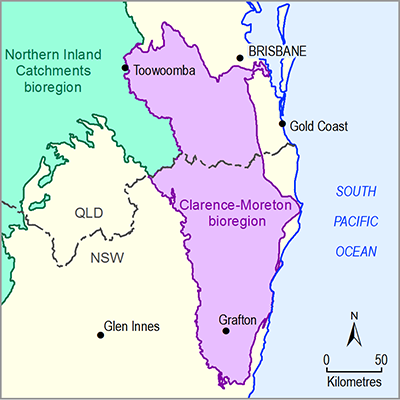Breadcrumb
Page 13 of 77
The spatial surface distribution of geological structures (e.g. faults) was collated from different data sources, including geological maps, geoscientific datasets from the Queensland and NSW geological survey and the ‘Clarence-Moreton SEEBASETM and GIS project’ product (Sommacal et al., 2008) (NSW Department of Primary Industries, Dataset 3). In addition, seismic images were used to qualitatively assess the presence and influence of faults in the subsurface. In seismic images, the upper part of the section (approximately 100 m) is often ‘noisy’, and it is therefore not well understood from this data source if faults extend to the surface.
Last updated:
8 January 2018

Summary and download
Product Finalisation date
2016
PRODUCT CONTENTS
- 2.1.1 Geography
- 2.1.2 Geology
- 2.1.2.1 Methods
- 2.1.2.2 Observed data
- 2.1.2.3 Statistical analysis and interpolation
- 2.1.2.3.1 Three-dimensional geological model workflow
- 2.1.2.3.2 Definition of the stratigraphic column
- 2.1.2.3.3 Selection of input datasets
- 2.1.2.3.4 Representation of structural elements in the three-dimensional geological model
- 2.1.2.3.5 Characterisation of binding horizons of shallow aquifers (alluvium and basalt)
- 2.1.2.3.6 Characterisation of the bedrock stratigraphic units in the Clarence-Moreton bioregion
- 2.1.2.3.7 Isopach maps, depth to formation top and depth to base of formation
- 2.1.2.4 Gaps
- References
- Datasets
- 2.1.3 Hydrogeology and groundwater quality
- 2.1.4 Surface water hydrology and water quality
- 2.1.5 Surface water – groundwater interactions
- 2.1.6 Water management for coal resource developments
- Glossary
- Citation
- Acknowledgements
- Contributors to the Technical Programme
- About this technical product
ASSESSMENT
ASSESSMENT COMPONENT
